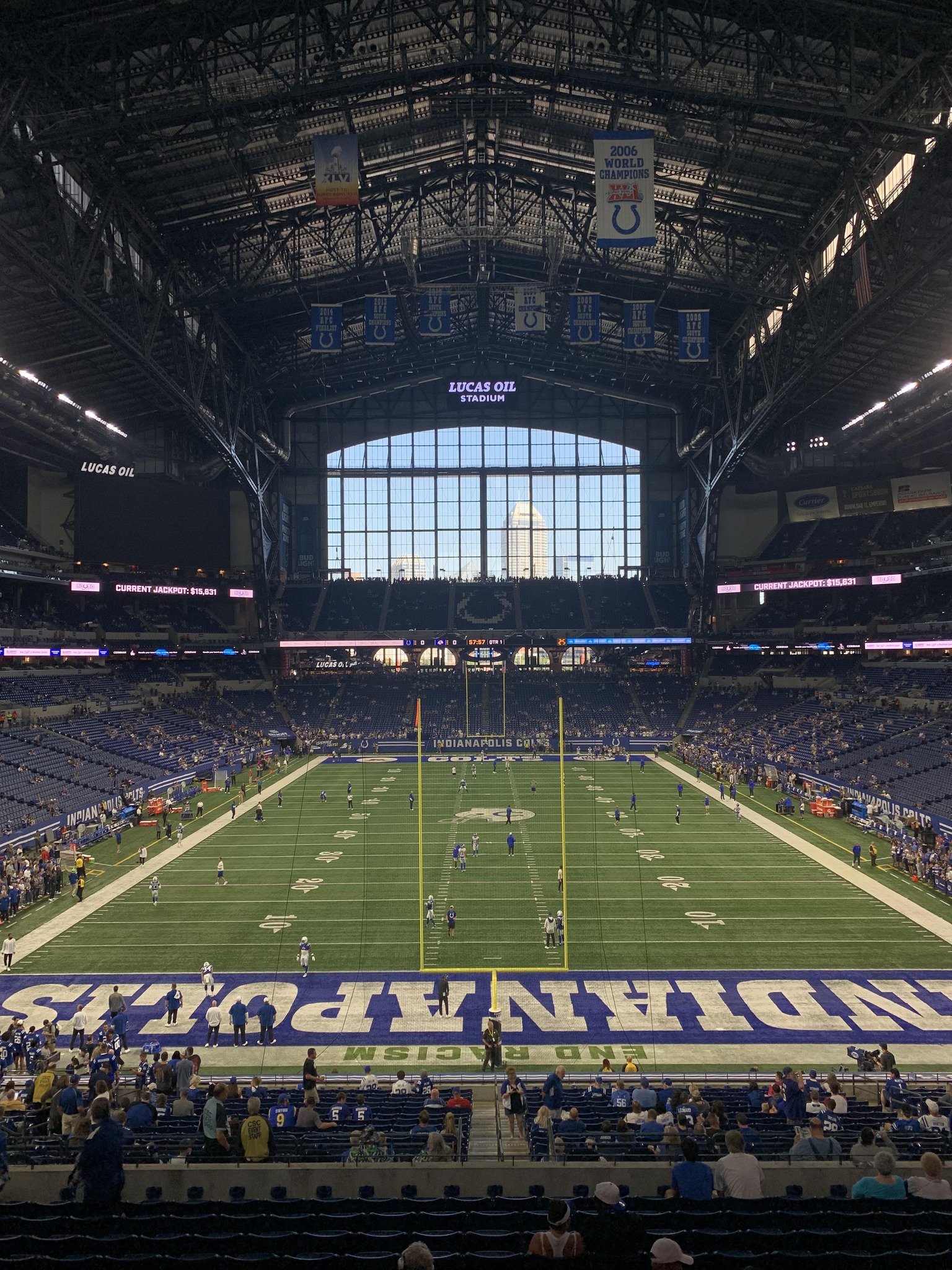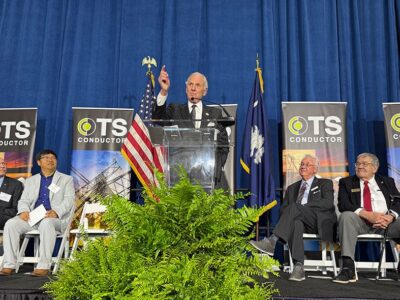The Indiana Convention Center and Lucas Oil Stadium (ICCLOS) stand as a dynamic, gigantic duo situated side-by-side — and connected by an underground walkway — in downtown Indianapolis. Lucas Oil Stadium, the home of the Indianapolis Colts, recently ranked as the fifth largest NFL arena and landed among the top 2% for best sports venues in all of America. The Wall Street Journal placed the Indiana Convention Center as the 16th largest U.S. convention center.
Besides their square footage, the two venues are also big when it comes to the environment. Both facilities annually recycle around 100 tons of aluminum cans, glass, plastic bottles, and cardboard material. Specific programs are in place for recycling batteries, light bulbs, and computers, as well as pallets, paper, and cooking oil.
A food waste pulper recycles dishwater and condenses waste before going into the landfill, while a cardboard bailer compacts cardboard and makes it more convenient to collect.
The Convention Center contains “Visionwall” curtain-wall glass that serves to lower energy usage. Similarly, lighting and HVAC operations are turned down during move-in and -out inside the exhibit halls. Meeting rooms and lobby areas feature compact fluorescent lamps and exhibit halls are switching to LED lighting, which is more energy-efficient and generates no toxic elements.
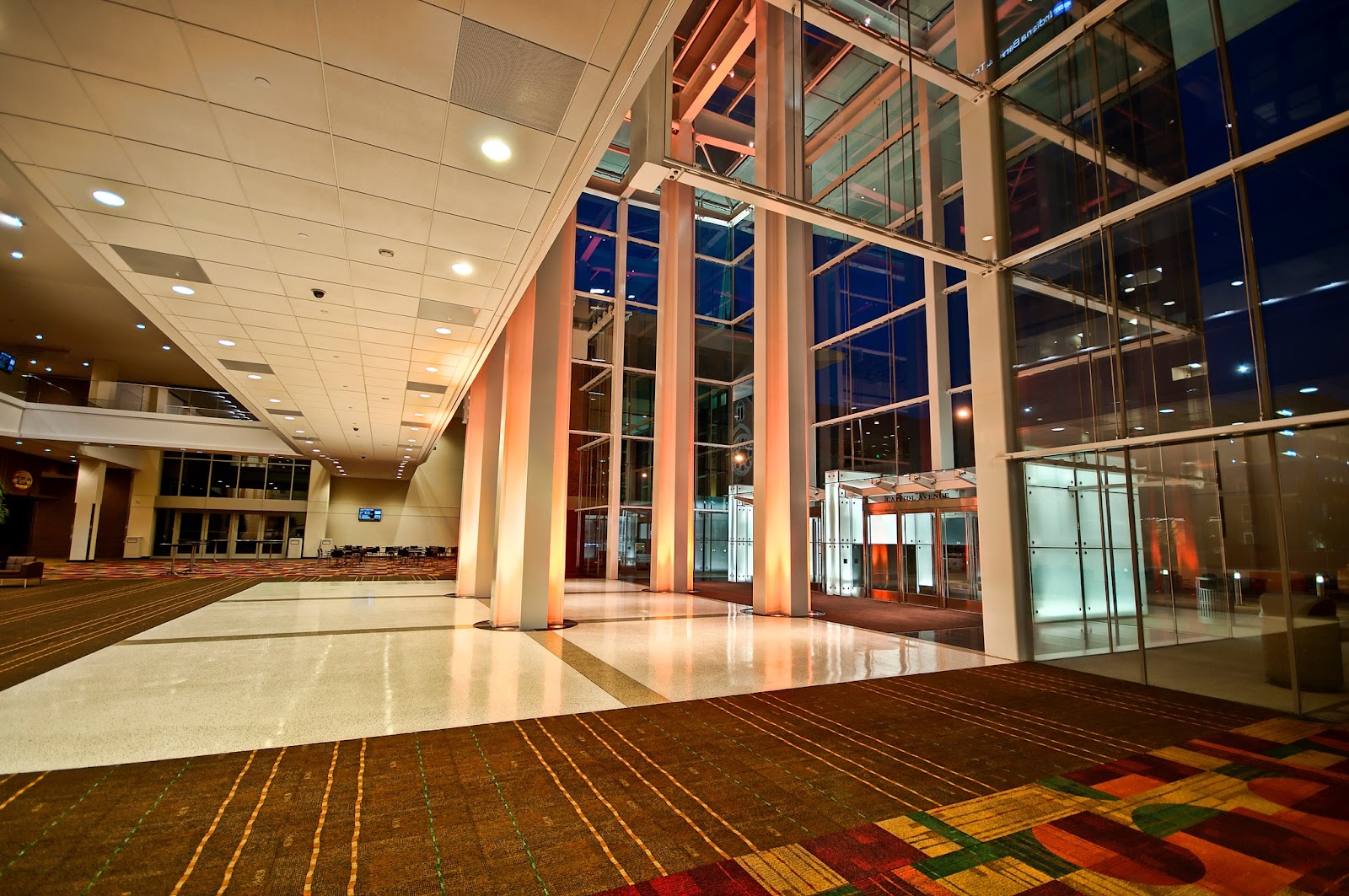
Photo Courtesy Indiana Convention Center
Energy savings are achieved at Lucas Oil Stadium through its design that lets in an ample amount of natural daylight in most lobby areas. At the same time, large fans only require a minimal amount of energy to circulate a maximum amount of air through the venue. A CPI Daylighting system also decreases electricity usage, as does the stadium’s famous retractable roof. A Firestone EnviroReady vegetative roofing system is composed of sedum trays, a drought-tolerant growing technique.
Bathrooms are equipped with sensors to help curb lighting usage, while other sensors restrict how much water is used. Water consumption is further reduced by sweeping parking lots instead of spraying them with water to clean them. Furthermore, infiltration basins extract oils and grease prior to stormwater reaching waterways.
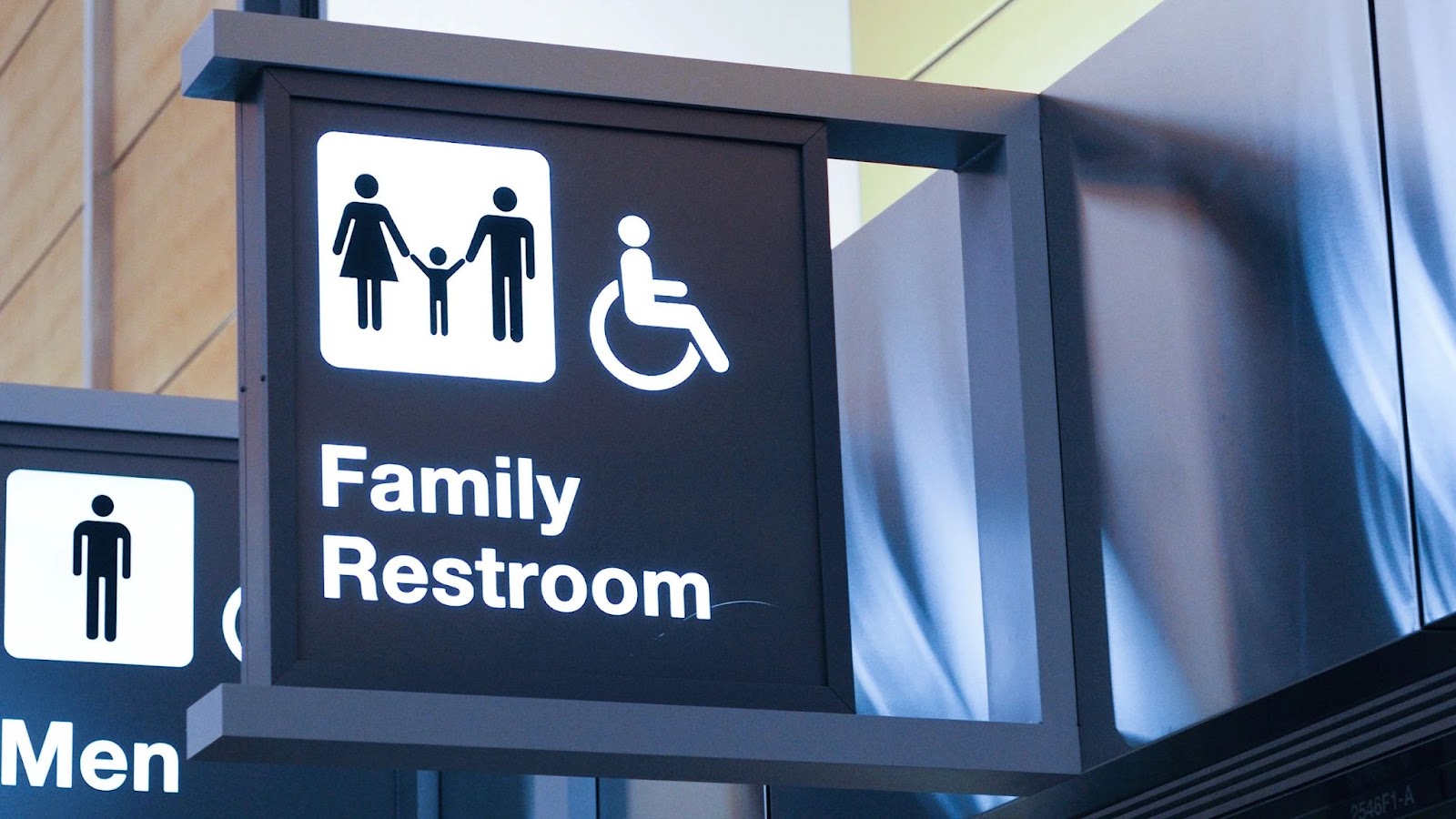
Photo Courtesy Colts
Sustainability is promoted in the venues’ food service sector, too. Partnerships with local farmers, for example, bring in seasonal fresh fruits, vegetables, meats, and poultry. Food reclaimed after events is provided to Second Helpings, a local food rescue program. An ICCLOS-operated training program for food sector jobs also donates food to homeless shelters, missions, and local food banks.
ICCLOS’s commitment to the Indianapolis community extends beyond food donations.
When Lucas Oil Stadium’s predecessor, the RCA Dome, was torn down in 2008, portions of its roof were given to the Indy Parks Department to be used for shelters and canopies.
Furniture, kitchen equipment, televisions, and other building equipment were donated to various local charities, too. Signage for the 2012 Super Bowl and the 2022 College Football Playoffs was donated to a local nonprofit, which used the materials to create items, like wallets, duffle bags, and beach bags, that were later sold to raise needed funds.
ICCLOS venues have been the site for numerous major events that have provided significant platforms to spotlight their sustainability agenda. Following 2012’s Super Bowl XLVI, Lucas Oil Stadium recycled nearly 6.35 tons of commingled materials and cardboard packaging.
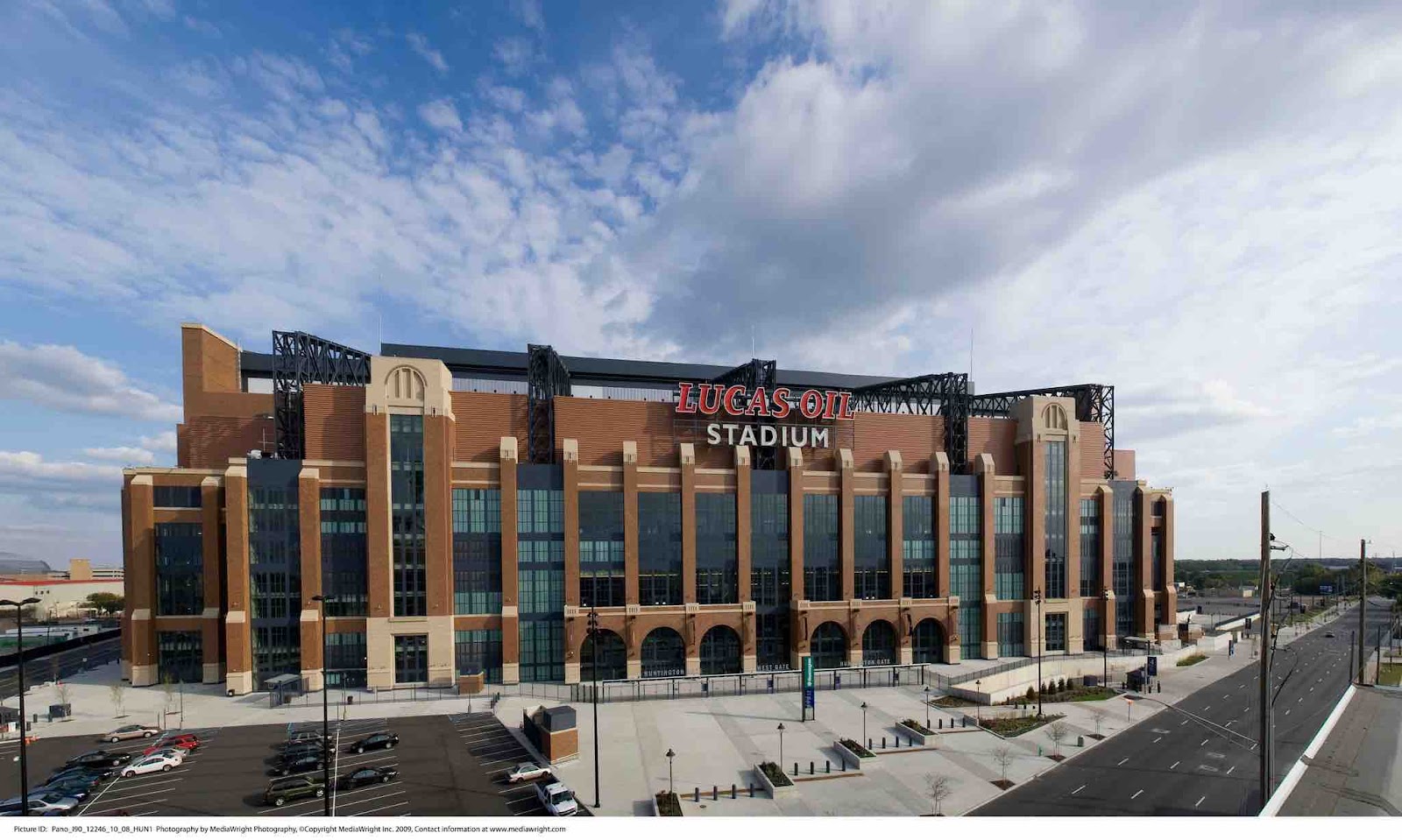
Photo Courtesy Lucas Oil Stadium
When the ICCLOS hosted 2021’s NCAA March Madness and Final Four for men’s basketball, 98% of all the used cans and bottles were recycled (3.3 tons), and all the waste at the Championship Game inside Lucas Oil Stadium was collected, including food, with 70% subsequently being diverted from landfills.
During that NCAA basketball tournament, Indianapolis’ college basketball venues were able to go carbon neutral through an arrangement done with ClimeCo that offset nearly 5,000 tonnes of carbon dioxide equivalent.
This deal supported carbon reduction projects involving wind energy, landfill gas capture and destruction, and natural forest habitat preservation nationwide.
Meanwhile, during the two weeks in 2022 when the Lucas Oil Stadium hosted the College Football Playoffs (CFP), gathered up more than 117 tons of materials around downtown Indianapolis and prevented 80% of CFP-generated waste from reaching local landfills.
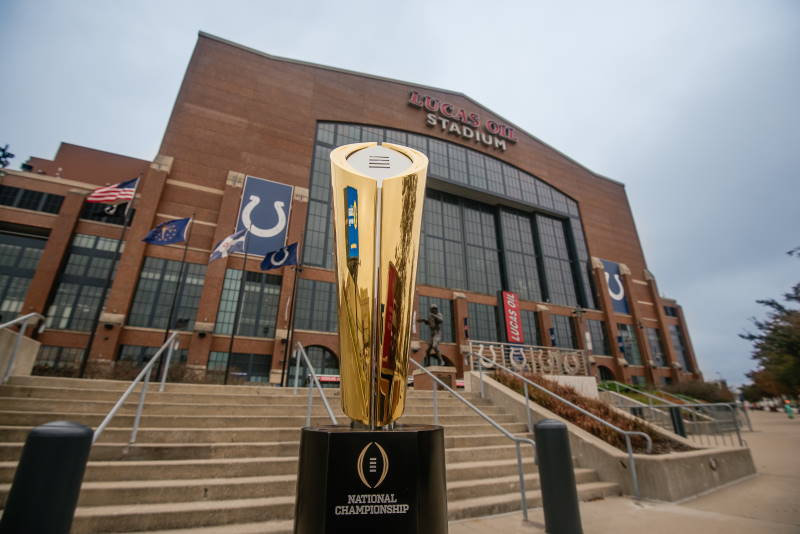
Photo Courtesy Lucas Oil Stadium
“The Green Sports Alliance commends the leadership demonstrated by the CFP and the Indy Host Committee for using the power of sports to take action on critical environmental needs across Indianapolis,” Roger McClendon, executive director of the Green Sports Alliance, said in a statement.
“Sustainability is about community transformation outside the lines of the field, and we are infinitely grateful to help drive authentic action with local stakeholders during college football’s biggest moment.”
The Colts also have turned their sustainability attention to their practice facility and headquarters, the Indiana Farm Bureau Football Center, located in northwestern Indianapolis. In 2020, solar panels were added to the building to serve to create clean, renewable energy and help lower the team’s overall carbon footprint, along with decreasing its energy costs. “… the Colts,” Pete Ward, its chief operating officer, explained to “Stadia Magazine” “are seeking to become a better steward of our environment and a better corporate citizen.”

